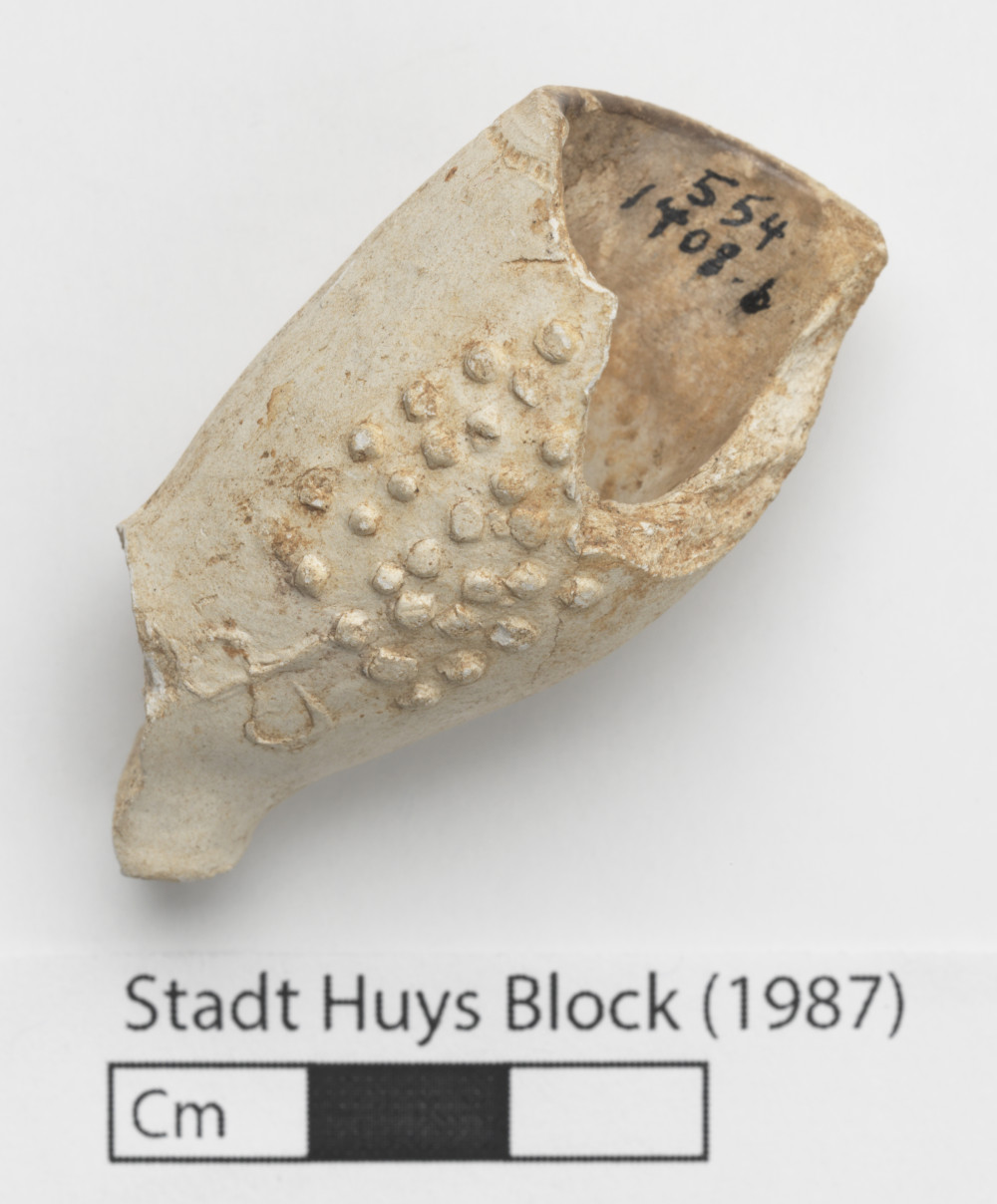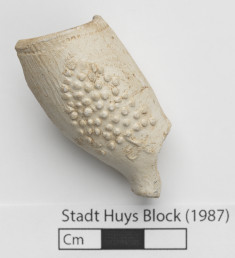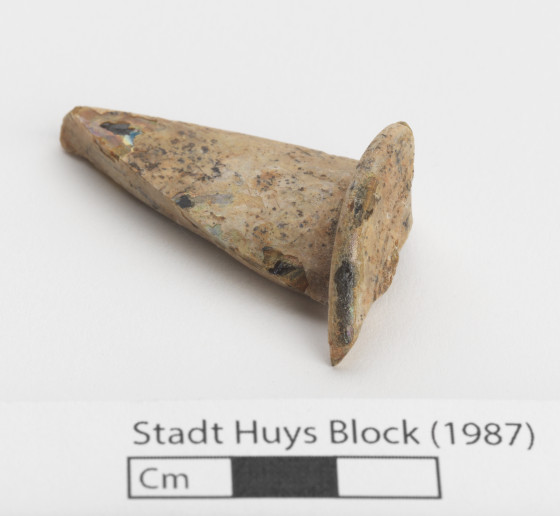Introduction: Lots 8, 9, and 15 are modern designations for adjacent parcels of land that were owned together and used as a single property until the early 1830's. Excavations produced important discoveries like that of the Colonial-era Lovelace Tavern, proving that significant archaeological resources could still exist in urban spaces. Project archaeologists were able to lobby for increased time and funds to continue their work on the strength of these finds, leading to additional discoveries. In all, the project provided considerable information about the history of New York City and its inhabitants from the 17th to the 20th centuries.
The tavern was constructed by the second English Governor of New York, Francis Lovelace, around 1670. Taverns were important spaces for colonial communities, serving as centralized meeting places that fulfilled important social, recreational, political, and economic functions. Lovelace Tavern became New York's temporary City Hall starting in the late-17th century after the Stadt Huys fell into disrepair and was demolished in 1706.
Rationale: Remains of the Lovelace Tavern were first encountered during the excavation of Test Cut AQ. Test Cut BL was a 6- by 9-foot excavation unit place south of Test Cuts AQ, AQ2, and AQ4. Test Cut AQ1 comprises the northeast corner of the test cut. The unit was placed in this location to see if Lovelace Tavern deposits continued southward. Features encountered during excavation inlude a 19th-century brownstone and brick floor, a 19th-century cobble storage pit, and remnants of the original tavern floor. Overall, archaeologists excavated 27 test cuts inside, adjacent to, or within the walls of the tavern, representing around fifty-percent of the total area.
Results: An intact Lovelace Tavern deposit was found in eastern half of Test Cut BL between 13- and 38-inches below excavation surface. The installation of the cobble storage pit in the 19th century likely disturbed or destroyed all other intact tavern layers in the test cut. The tavern deposit contained many 17th and early-18th century artifacts, including datable smoking pipe stems and bowls. The tavern layer came to a close in this level, however, as subsoil was encountered at its bottom.
Lot 8, Test Cut BL, Stratum XXII, Level A
-
Collection method
Trowel, Wetscreen (1/2-inch mesh). Natural Level.
-
Soil description
Gray, Gray-Green, Yellow-Brown Silt with Red Sand
-
Munsell
10YR 4/2 - 10YR 3/2







